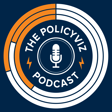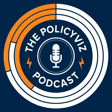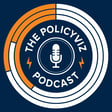
Beyond the Visual: How Tactile Maps Expand Data Accessibility
In this week’s episode, I welcome Jakub Wabiński and Vincent van Altena to the show to talk about their new book, Tactile Mapping. We explore how tactile and multisensory design can make maps—and data—more accessible for people with visual impairments and beyond. Jakub and Vincent share insights into how tactile maps are designed, tested, and used in real-world settings like museums and public spaces. We also discuss user-centered design, the challenges of scaling inclusive practices, and how tactile mapping can help everyone better understand and navigate the world around them.
Keywords: Jakub Wabiński, Vincent van Altena, PolicyViz Podcast, Jon Schwabish, tactile mapping, inclusive cartography, data accessibility, tactile design, haptic maps, visual impairments, data visualization, inclusive design, spatial data, accessibility in mapping, geovisualization, map design, tactile graphics, inclusive data storytelling, multisensory design, universal design, ICA working group, TREP project, accessible data visualization
Subscribe to the PolicyViz Podcast wherever you get your podcasts.
Become a patron of the PolicyViz Podcast for as little as a buck a month
Check out Jackub and Vincent's book Tactile Mapping
Follow me on Instagram, LinkedIn, Substack, Twitter, Website, YouTube
Email: jon@policyviz.com


